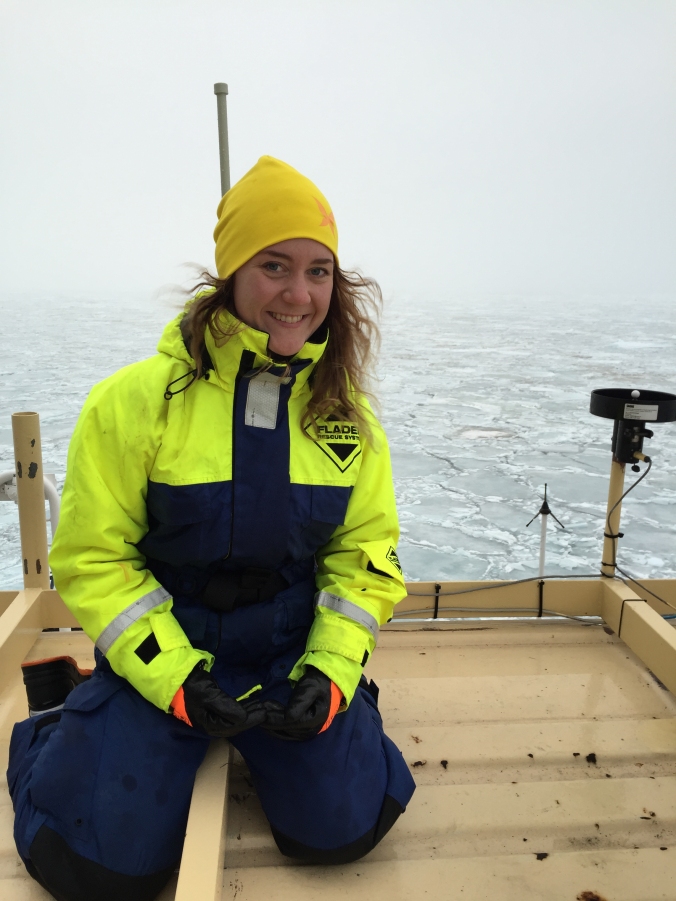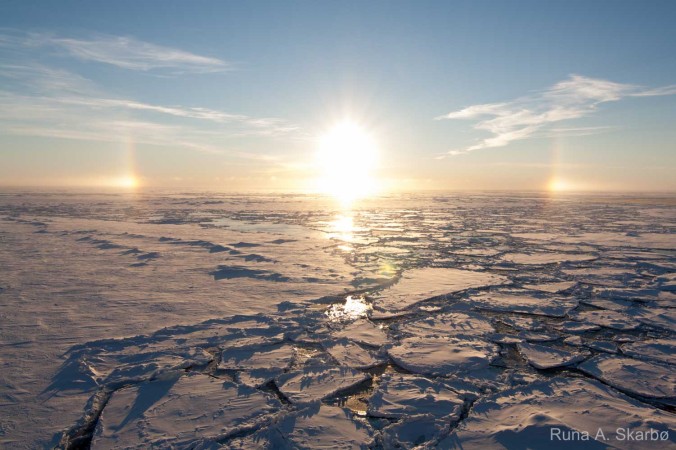This post was originally written while I was on the Arctic Ocean 2016 research cruise, but was never published. But hey – it’s Thursday, so why not throw a little #ThrowbackThursday post, and learn something new about seismics?
An important part of the Arctic Ocean 2016 research cruise have been to collect seismic data (more about the reason behind the cruise here). Seismic collection reveals the velocities in the sediments and the structure of the Earth’s crust. The velocities in the sediments are used to document the thickness of and types of sediments. Thus, these results can give new knowledge about the tectonic history of the Arctic!
Seismic surveys are principally made by making a loud bang underwater and recording the sound that comes back. We tow all seismic equipment behind the ship with what is called an umbilical cord (see photos below from a deployment). The air gun that makes the sound is closest to the ship and is towed between 12 to 20 metres below the surface. A streamer is attached behind the air gun, which floats 3 to 10 metres below the surface. The streamer contains hydrophones (underwater microphones) that listen to the reflected and refracted sound from the air gun.
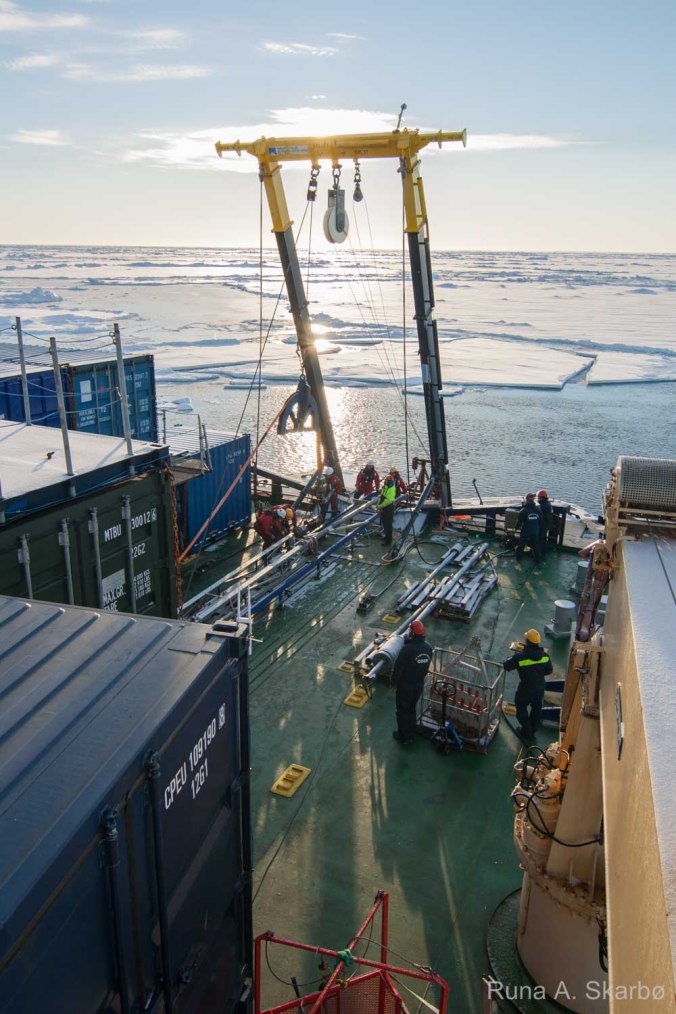
Deployment of the seismic equipment from the aft deck
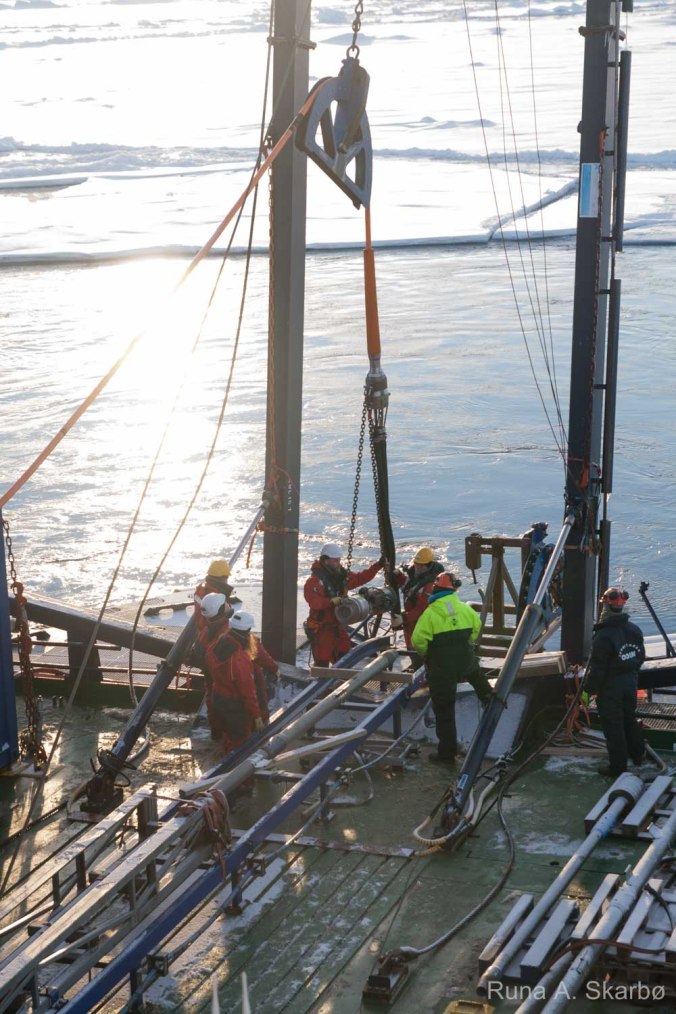
The air gun, before going in the water
When seismic surveys are done in open water, you usually have kilometres of streamers towing behind the ship. Longer streamers gives a larger picture of the sound image, both in time and space. This gives more information to the scientists about the deeper and older layers. When sailing in the ice, it is not possible to have long streamers because of the ice. Therefore we only have 200 metres of streamer, which is really short in a seismic setting. In order to get a better sound picture, buoys with hydrophones are deployed far away to listen to the sound. This serves the function as an artificially prolonged streamer:
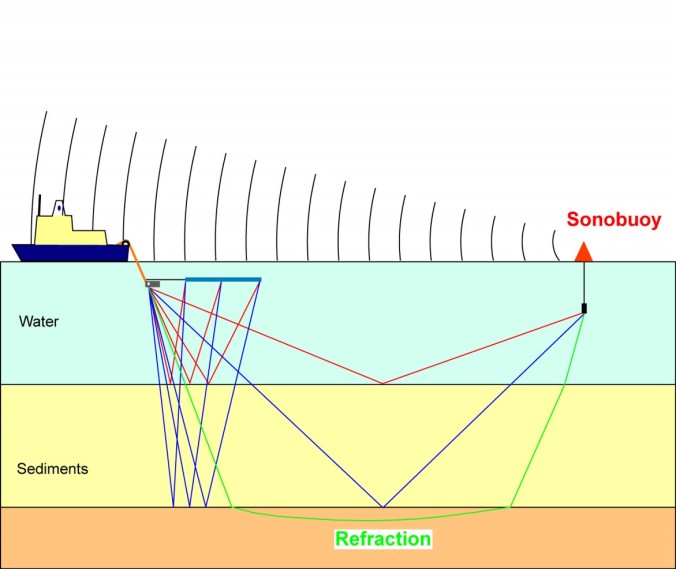
A schematic of seismic refraction (courtesy: Thomas Funck)
Some buoys are deployed directly in the water. They sink, and cannot be recovered. Other listening stations are deployed on the ice with helicopter, and are retrieved after some time, like in the photo below.
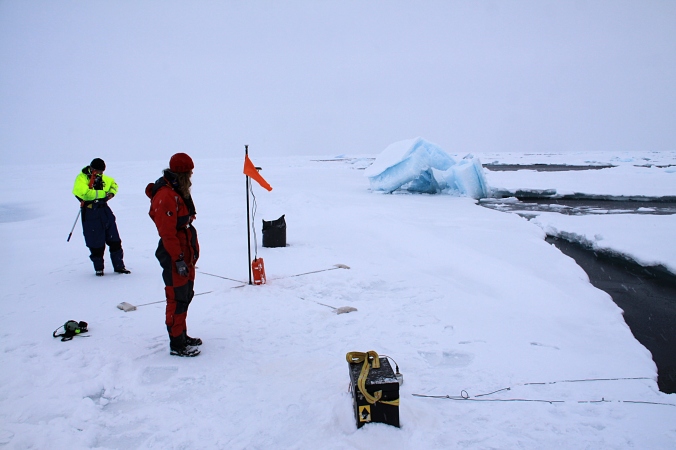
Deploying a listening bouy on the ice (photo courtesy: Thomas Funck)
As I wrote in the post about icebreaking, we were sailing in straight lines due to the seismic lines (but sailing in straight lines is not easy while breaking ice!). The sound signals are recorded in the time domain, which means that in stead of seeing where the signal came from you only know when it came back. To convert this to the spatial domain (to be able to place it on a map), you have to calculate with the speed of sound and do some other calculations. Therefore, the calculations are easier if the signals are recorded along a straight line. Thus, for the most part of the research cruise, we have been breaking a nice, straight line through the ice for the LSSL, while they have been shooting seismic in our wake. However, after we split ways we have done several seismic lines by ourselves. Due to ice conditions, we actually had to first sail along the line and break the ice, then sail back, deploy the seismic equipment and sail the line again. It was a lot of back and forth, but it makes a really nice “broken highway”:
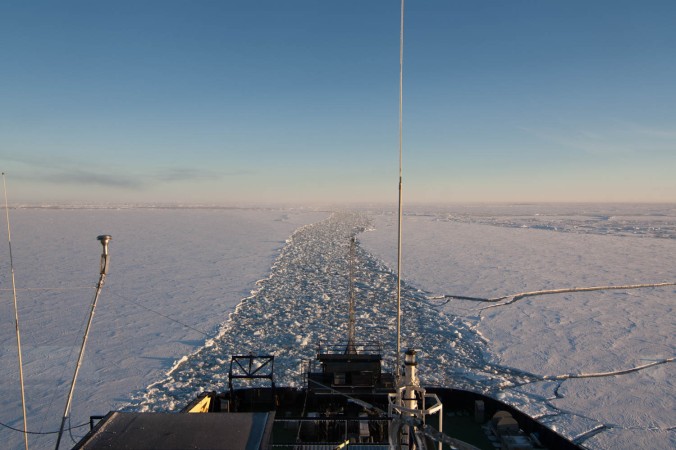
Broken, Arctic highway; sailing in our own tracks when doing seismics
The sub-surface air gun fires around every 12 seconds. The bang is loud, and you can hear it well all over the ship. It is worst for the people with cabins in the annex, furthest to the aft of the ship. In our cabin on the second deck, the bang is not very prominent. On the bridge, however, you can actually feel the vibrations in your body, in addition to hearing the bang. But you get used to it after a while, and then, when it stops, it suddenly feels like something is wrong.
To minimize the impact of the loud noise on animals, we have a dedicated “mammal observer” on board. When doing seismic, Dale is on the lookout for whales and polar bears in the water. If one is observed, we stop the shooting immediately. Fortunately, we have not seen any mammals while shooting seismic this time. Or maybe I should say unfortunately? After 41 days in the Arctic we still have not seen a single polar bear!
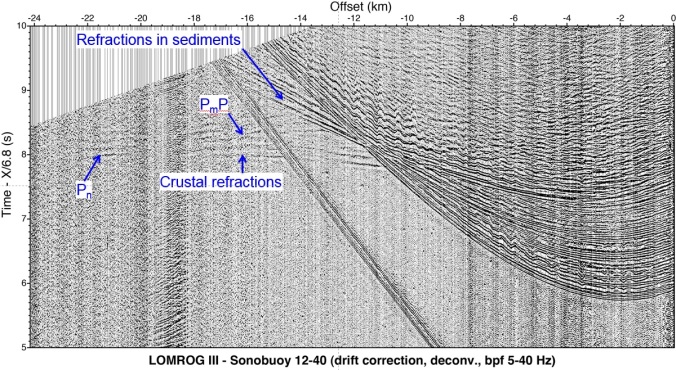
Seismic results, with some markings on it (courtesy: Thomas Funck)
(Thanks to Thomas Funck and Anders Dahlin for fact checking, providing photos and helping me learn about seismics!)
